Learn all the Pros and Cons of Inset vs Overlay cabinets based on style, budget, and storage so you can make a decision about which is right for YOU!
Who knew there are so many decisions to make when buying or building cabinets?! Not only do you need to decide on the type of cabinet, stock, semi-custom, or custom, but also how the doors and drawers are placed on the cabinet frame (sometimes referred to as the box).
And so comes the decision as to which to choose…inset vs overlay cabinets!
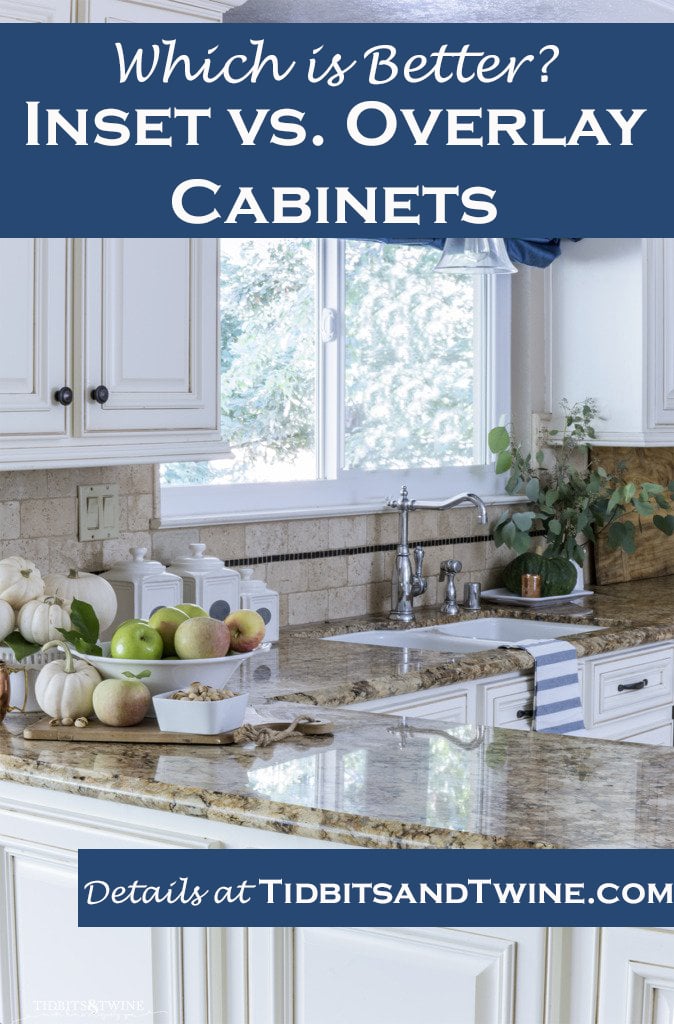
Inset vs Overlay Cabinets
There are actually three ways to place doors and drawers on framed cabinets: Inset, Partial Overlay, and Full Overlay. Here’s information on each, including their Pros/Cons. I’ll also share what I did in my own home plus my recommendations so that you can make a decision that’s best for you!
The type of door you choose determines how the cabinet’s frame is constructed, so it’s an important decision!
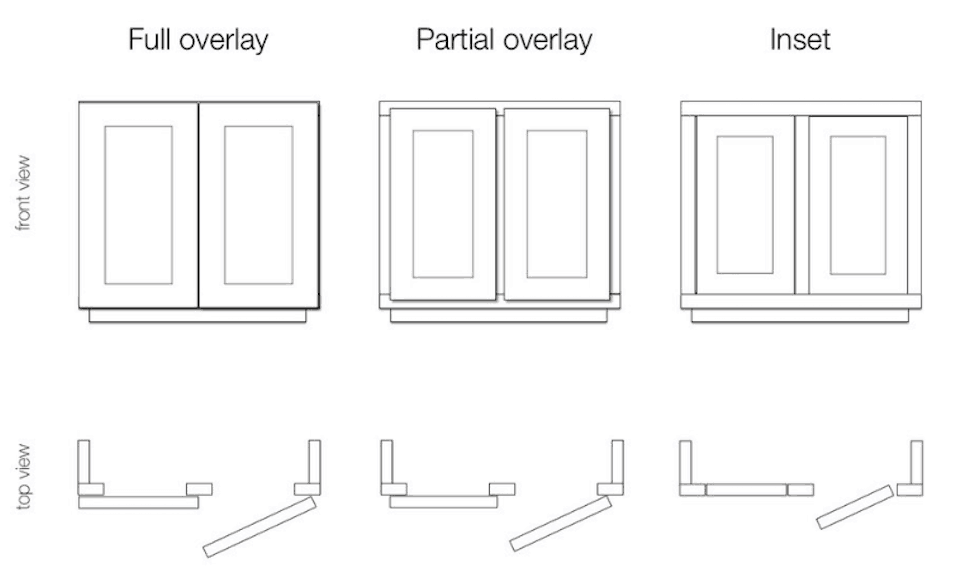
Inset Cabinet Doors
An inset door is one that where the door is flush with the frame when closed. Inset cabinets have a streamlined, clean look and the full frame is visible. These take more still to install than other cabinet doors because everything must be perfectly plumb.
Since the doors and drawers are all flush with the frame, these types of cabinets require a handle or push system to open. In terms of hinges, though, you to choose from either exposed or concealed hinges, depending on your style and preference. A concealed hinge will allow for a soft close mechanism.
While having a very clean look, inset cabinets offer the least amount of storage between the three options.
Pros of Inset Cabinets:
Clean Look: Having the doors and drawers flush with the frame creates a streamlined look. These doors are particularly beautiful in historic homes!
Better Quality: Because inset doors require more skill to install, these cabinets are usually well made overall.
Baby Safe: No sharp corners on cabinet doors and drawers because they are flush with the cabinet! This also means that there are no edges that can be bumped into and chipped.
Cons of Inset Cabinets:
More Expensive: Because of the precise craftsmanship required, inset cabinets tend to cost more.
Higher Maintenance: Humidity or house shifting can cause the doors/drawers to come out of alignment and rub against the frame. These doors/drawers will require some amount of adjustment in order to keep them opening seamlessly.
Less Storage: Compared to frameless cabinets, inset cabinets offer less storage
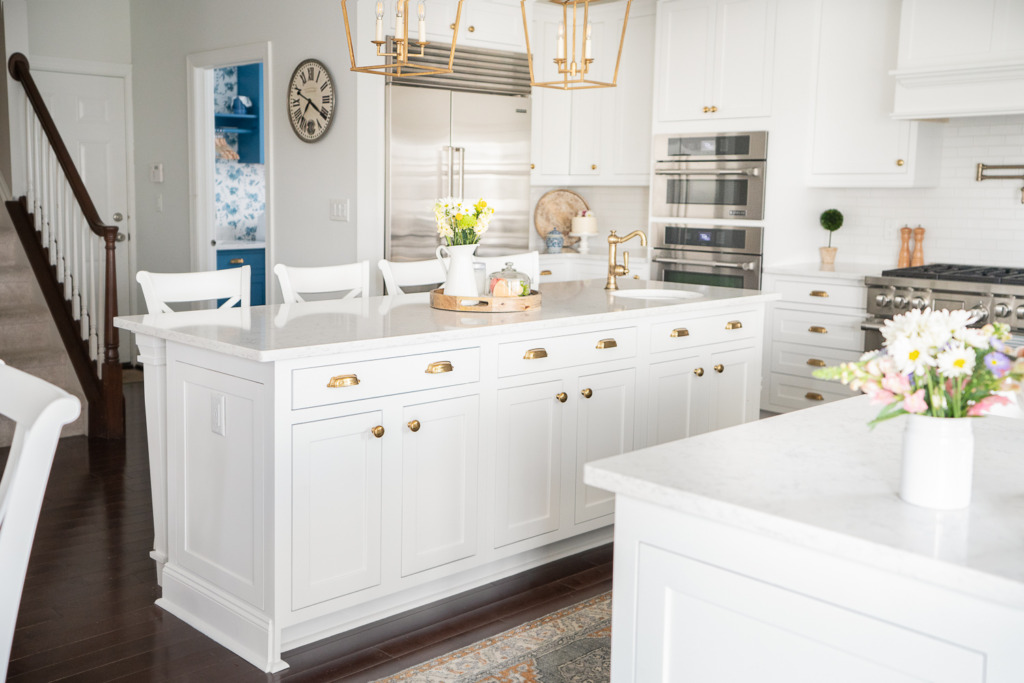
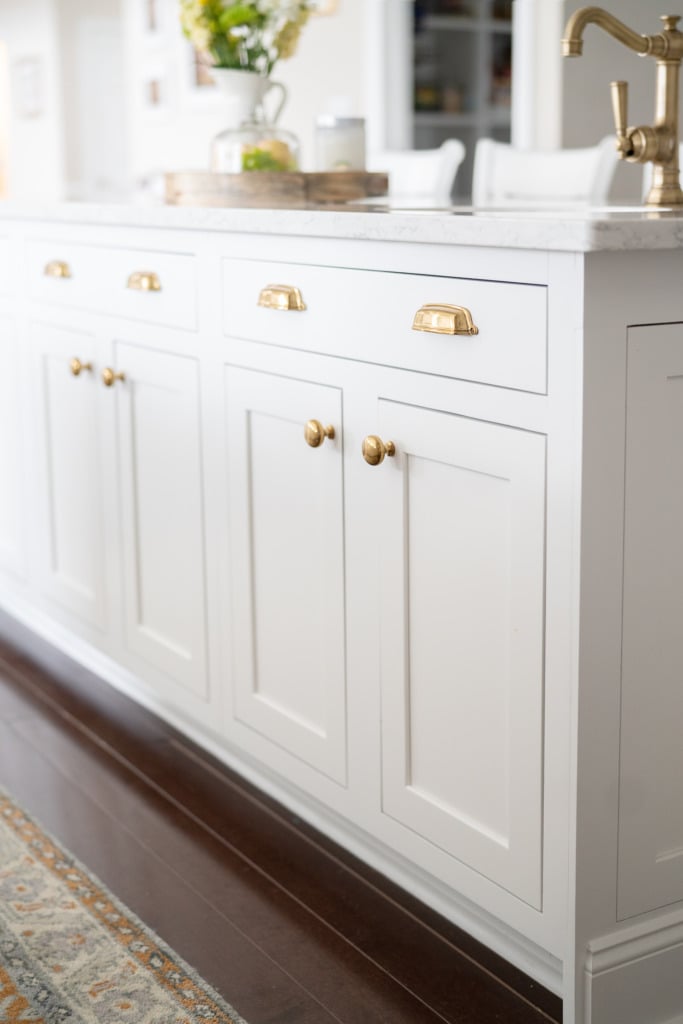
Don’t miss the STOCK, SEMI-CUSTOM, & CUSTOM cabinet discussion!
Partial Overlay Cabinet Doors
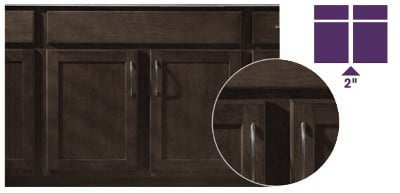
A partial overlay is traditional in the United Statles and means that the doors and drawers overlap the frame by about 1/2″ on either side of an opening. This leaves anywhere from 1″-2″ of frame showing in between doors.
This is the LEAST EXPENSIVE type of overlay because the measurements don’t have to be as precise as they do with inset or full overlay.
Partial overlay cabinets offer middle-of-the-road storage and do not require any hardware to open.
Pros of Partial Overlay Cabinets:
Least Expensive: Of the three options, partial overlay cabinets are the most affordable.
No Hardware Required: There is enough between each cabinet and drawer that no hardware is necessary to open.
Cons of Partial Overlay Cabinets:
Less Storage: Because the frame is not entirely hidden, vertical stiles are still required between cabinets resulting in less easily accessible storage.
Dated: While still a very popular cabinet style in American homes given their affordability, they are starting to be replaced by either inset or full overlay.
My kitchen is from 1989 and has partial overlay doors. I did change the hinges, though, so that they are hidden.
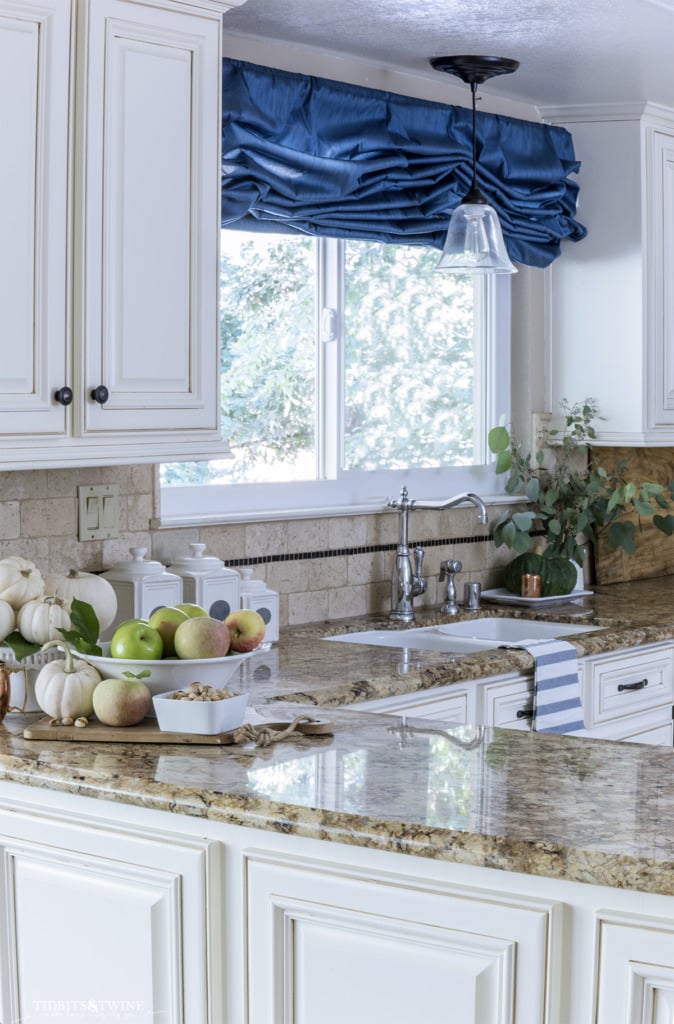
Full Overlay Cabinet Doors
A full overlay means that the doors and drawers completely cover the cabinet frame. Technically, there is about a 3/8″ gap in between but visually, this has a very clean look to the cabinet front.
Without the frame showing, openings can be about 1″ larger with a full overlay and so this style offers the most storage of the three options.
You can put a full overlay on a framed cabinet, but you can also get a frameless cabinet. A frameless cabinet only works with full overlay doors.
Unless you have a routered finger pull or a magnetic push latch, this type of cabinet will require a knob. This is a very common look in Europe and is quickly becoming more popular in the U.S.
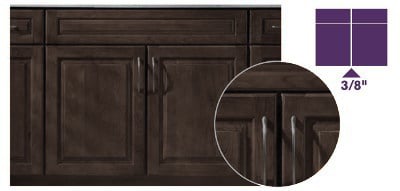
Pros of Fully Overlay Cabinets
Most Storage: With frameless cabinets, there is no need for a center style between doors, allowing for maximum storage.
Less Expensive: Full overlay cabinets require less skill to install and can be less precise than inset cabinets, and so are less expensive. They are more expensive than partial overlay, though.
Streamlined Look: Similar to unified with is all at one level, full overlay cabinets also have a very clean look to them.
Flexible: These doors/drawers work on both framed and frameless cabinets.
The Cons of Full Overlay Cabinets
- Hardware Required: There’s nowhere to slide fingers in between the doors of full overlay cabinets, so you’ll definitely need to add hardware of magnetic latches.
- Exposed Corners: With the corners of the doors and drawers are exposed, they can be more easily be chipped or show signs of wear over time.
My master bathroom is an example of a full overlay.
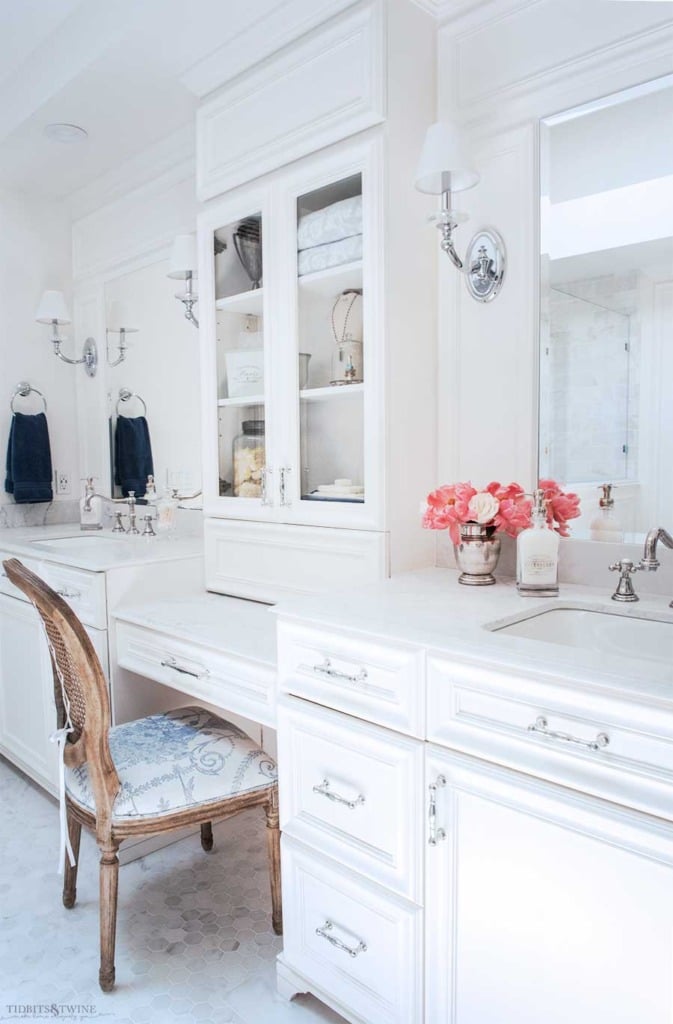
Which Cabinet Door is Right for You?
When it comes to choosing a door, there’s no right or wrong. Primarily you’ll just need to choose based on your STYLE, the LOOK you like, and of course, your BUDGET. While each of the three styles does have different storage, it’s negligible so look at style and cost first.
And if the look you choose isn’t within your budget, there are still tweaks you can make that affect the overall cost, such as:
- Stock, semi-custom or custom cabinets
- Stain vs Paint {stain is less expensive}
- Flat panel vs Raised {flat is less expensive}
- Mitered corners versus Coped (Butted) {coped is less expensive}
- Type of wood
- Amount of embellishment on the door
Whew! Who know that there were so many decisions to make when choosing a cabinet. If you want more information on designing cabinets, you can get my *FREE* 10 tips for designing cabinets HERE!
Next week, I’ll share my recent pick for my upcoming bathroom renovation!

Join the Community
Let’s keep in touch! Get exclusive artwork plus the latest news delivered directly to your Inbox!

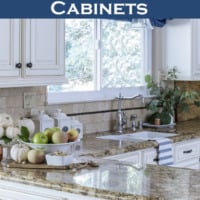
This was a great review of the different types of cabinets. We remodeled our small kitchen 2 years ago and we chose custom built cabinetry from a local cabinet maker. Our interior designer recommended inset cabinet doors and I love them! It only cost us $500 more for the inset doors. Well worth the price!